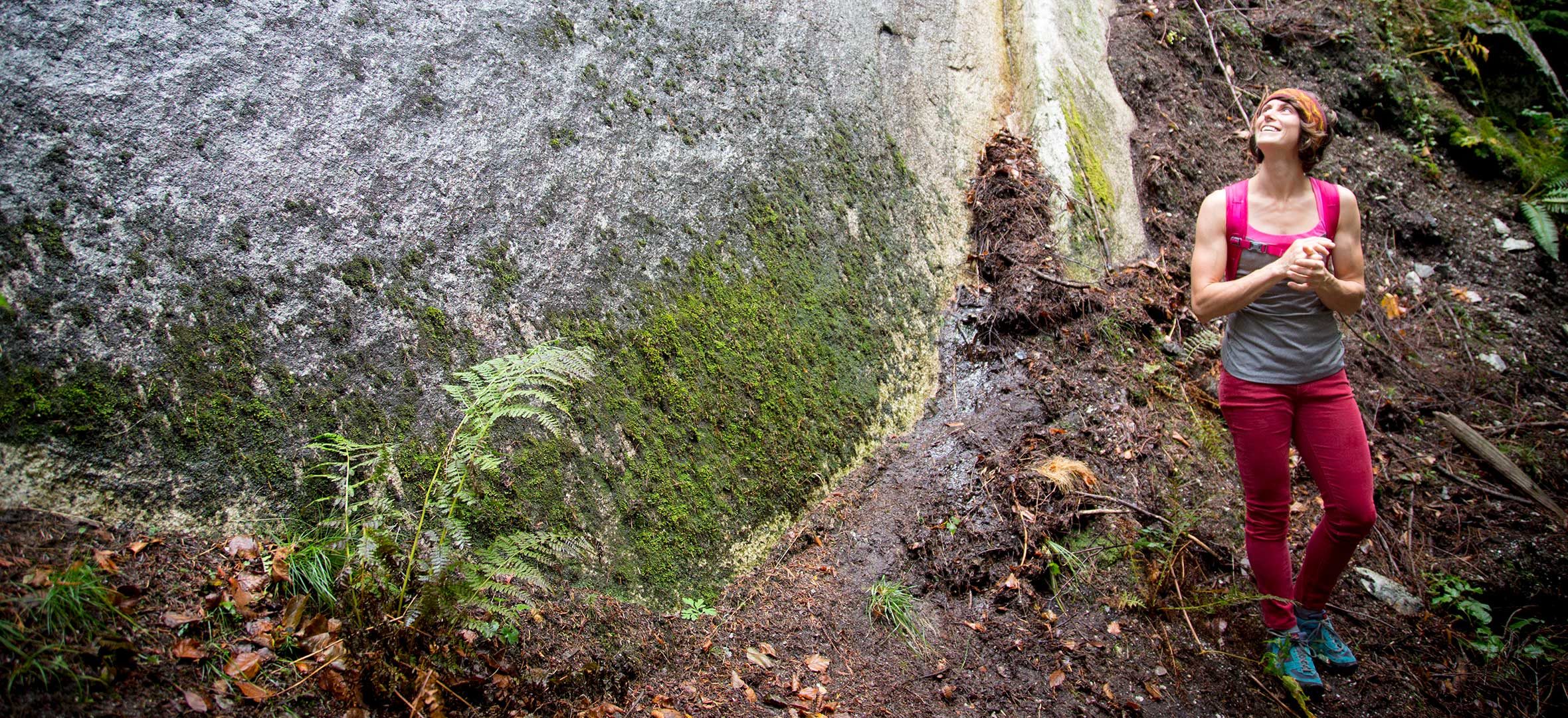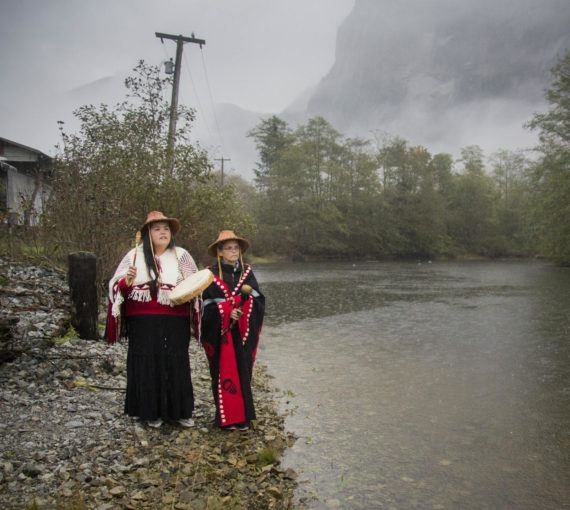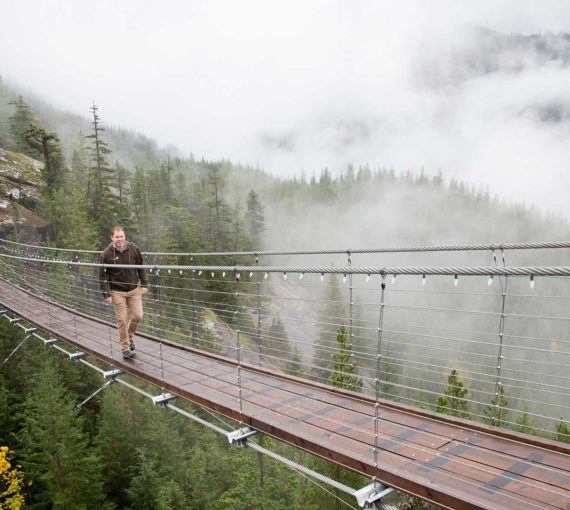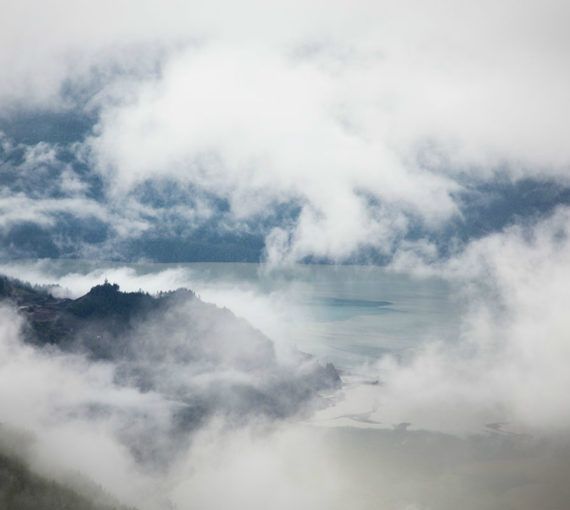
Rock climber Sarah Hart moved to Squamish, B.C., so she could climb at a moment’s notice all year long. But like many fellow residents, she’s concerned about a growing list of industrial developments on the horizon. (Photo: Kris Krug)
The 700-metre wall of the Stawamus Chief towers above as fog drips from giant hemlocks. Rock climber Sarah Hart zigzags through brilliant green ferns and sits down on a crash pad amid giant boulders. “To be a climber you have to be strong. This is where you go to get strong,” says Sarah.
“People come from all over the world to climb in Squamish,” she says. “In the climbing world, it’s a really important place.” Rock climbers love gigantic rock faces and uninterrupted cracks, making the Chief an iconic destination. In 2008, between 5,000 to 8,000 people climbed in Squamish, with projections that numbers will double by 2020.
Sarah moved to Squamish so she could climb at a moment’s notice all year long. “I love it. I’ll never go anywhere else. We could climb a route up the Chief starting at 3:00 p.m. and be down in time for dinner. You can’t do that in Toronto. It’s hard to do it even in Vancouver.”
“I love it. I’ll never go anywhere else.”
When she’s not climbing, Sarah skis the surrounding mountains, marveling at the still air, lightly falling snow and silent wilderness. “You share these really beautiful experiences with your friends, and the bond grows. You can hear your friends’ whoops of joy echoing across the valley. You don’t experience that type of joy shopping!”
Sarah has noticed a greater number and diversity of people taking advantage of Squamish hiking trails and other nature settings. “I love it when I see people all decked out in lululemon and smelling of perfume hiking the back side of the Chief… With relatively low commitment they’re getting to some pretty beautiful places. When you experience those beautiful places, you gain a real appreciation for its value. And you can’t help but want to see that live on.”
“Everyone’s got their video cameras out and is laughing. It’s very vibrant. Where we live is alive.”
Squamish residents are witnessing a remarkable coastal rebirth. One spring day this year, local radio rallied people to witness an event few had seen in their lifetimes: orcas chasing a pod of dolphins into the harbour. “Kids and parents and tourists,” remembers Sarah. “Everyone’s got their video cameras out and is laughing. It’s very vibrant. Where we live is alive.”
Like many fellow residents, she’s concerned about a growing list of industrial developments on the horizon and counting on local leaders to make decisions that reflect community interests and maintain the health of Howe Sound. Squamish markets itself as the outdoor recreation capital of Canada, but projects, such as a large log sort, keep popping up and she’s frustrated by the number of new resource extraction proposals. “It kind of breaks my heart… I thought we had moved past that. I thought we were poised to be something different,” she says.
Sarah favours investments that revitalize the downtown core, develop environmentally responsible access projects and improve camping facilities to build on the town’s new image.





